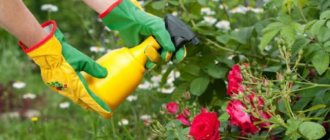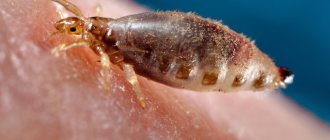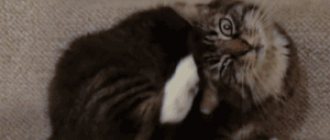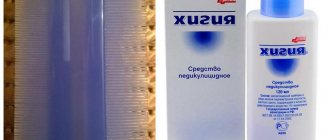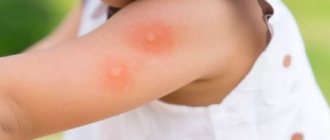The active substance (AI) of a number of insecticides, deltamethrin, belongs to the chemical class of pyrethroids, and within this class to type II (cyanopyrethroids). Deltamethrin preparations are mostly used for sanitary and household disinfestation and in medicine as a remedy for pubic and head lice. The first generation of well-known crayons and pencils against cockroaches and bedbugs contained exactly this DV. Currently, in the USA and EU, deltamethrin as an insecticide is considered obsolete due to the massive formation of communities of harmful insects resistant to it (in the USA, up to 90% of the recorded bed bug populations are genetically resistant to it) and its high danger to people. In the exemplary prosperous West, lice is perhaps the most common childhood disease; in a quite decent hotel, for an additional fee, they can offer you a “No bags” room (without bedbugs), and among the inhabitants of respectable penthouses, it is somehow not even customary to pay attention to cockroaches. Moreover, the “greens” can sue the crushed, but are no less ubiquitous. But in countries and regions that are not mindlessly addicted to pesticides, deltamethrin is still used quite widely.
Structure and properties
Structural formula and chemical structure of the deltamethrin molecule
In the production cycle of deltamethrin, a single isomer of this substance is isolated and sold, but its prices are moderate, even low. This is no longer typical for pyrethroids. The structure of its molecule is also unusual for this chemical class. The chrysanthemum acid residue, typical of most pyrethroids (but not all) (circled in brown dotted line in the figure), has bromine atoms attached, rather than organic radicals. And to the other end of the “core” of the molecule, “suspended” are also not the usual organic radicals in this class, but a pair of phenolic rings “cross-linked” by an oxygen atom. All this taken together leads to:
- Strong contact activity of the DV in relation to insects: it is enough for a bug or cockroach to run 2-3 cm along the treated surface, and for a fly or mosquito to sit on it for 1-2 minutes, and the “unfortunate” insect is doomed;
- Lack of acaricidal activity: deltamethrin is useless against ticks;
- Rapid development of resistance to the drug in objects of elimination: repeated treatment during the growing season or during the change of generations of synatropic insects almost certainly guarantees the formation of a population genetically resistant to deltamethrin;
- Instability of DV in light and air: on open treated surfaces the drug is completely neutralized within no more than 15 days;
- As a consequence of point 4 – a short period of protective action (up to 10-12 days);
- Persistence of DV in soil, i.e. its high durability and low mobility: in ordinary garden soil, deltamethrin is almost completely preserved for 8 weeks;
- For the same reasons as in paragraph 1 - the high toxicity and degree of danger of the drug for people;
- Agrotechnical preparations of deltamethrin are phytotoxic: treatment within the limits of regulations reduces yield, and a 0.01% solution causes chemical burns of leaves.
Note : deltamethrin hazard class for bees, fish and aquatic invertebrates, like other pyrethroids, is 1st (the highest degree of danger).
Action
Deltamethrin, like the rest of its “classmates,” is a neurotoxin (nerve poison) that blocks the transmission of nerve impulses to control muscles. The result is seizures, convulsions, paralysis and death. But due to the presence of a very “small and nimble” active principle (bromine), the dose of deltamethrin in the insect’s body is already consumed in the peripheral ganglia of the nervous system (in their peripheral nervous system). By a very rough analogy with ours - the “spinal cord”, although, unlike vertebrates, the nerve trunks of insects are located under the ventral (abdominal) side of the body, but the heart and main vessels are under the dorsal (dorsal) side. Therefore, deltamethrin is a fairly fast-acting poison, but with a “sabotage effect”: the affected insects die within 2-6 hours, but since their “brains” (the cephalic ganglia, not directly connected to the body organs) are not affected, they run to “escape” to their nests , where they share the poison caught on the body with their brothers.
This mechanism of action is very valuable for sanitary and household insecticides, but, firstly, it ensures the rapid formation of resistant populations: if the insect has not grabbed enough poison to die, the same cephalic ganglia manage to launch internal mechanisms of its neutralization, which are fixed genetically and passed on to the offspring. Secondly, mites, like other arachnids (arachnids), are extremely primitive compared to insects, and therefore tenacious. Their nervous system is much less sophisticated and specialized. In the tick’s body, deltamethrin “has nothing to grab onto with all its teeth.” The parasite experiences some discomfort, but in order to kill it with deltamethrin, it must be drowned in the working solution.
Toxicology
Due to the same specialization for the peripheral nervous system, deltamethrin is much more dangerous for people than other pyrethroids. Its toxicological indicators in popular reference books on pesticides are clearly underestimated. Current values of the main ones:
- LD50 for rats orally up to 37 mg/kg body weight; cutaneously up to 3500 mg/kg (typical values 24 mg/kg and 2000 mg/kg, respectively).
- CK50 for fish – less than 0.1 mg/cu. dm.
- ADI for humans 0.01 mg/kg.
- MPC in the air of the work area (for TB-trained people in PPE) – 0.1 mg/cubic meter. m.
- OBUV in atmospheric air (for unprotected people) – 0.0001 mg/cu. m (!).
- MPC in soil is 0.01 mg/kg.
- MPC in water of reservoirs is 0.005 mg/kg.
The strong contact activity of deltamethrin entails the same skin-resorptive ability, because both are determined by the high lipophilicity of the DV. In addition, a cumulative effect is clearly noted for deltamethrin, which is also generally not inherent in pyrethroids. Specifically, this means repeated poisoning with the same dose, more severe than the initial one, and the effect of the drug (including dry) on the skin, mucous membranes or eyes of a person is somewhat similar to that of mustard gas: at first a slight irritation is felt, which quickly passes. Then, within an hour or several, the affected area becomes inflamed and very itchy. You can’t scratch – non-healing wounds form where you scratched! In the same way - in case of repeated exposure of the drug to the same place, even if the initial dose was completely neutralized and treatment was completed.
“Based on the totality of aggravating factors,” pesticides containing deltamethrin are assigned the 2nd class of hazard to humans, which, by the way, is noted in the introductory and general parts of many pesticide manuals. But in descriptions of specific drugs (often clearly commercially oriented and/or accompanied by advertising from their manufacturers), class 3 is indicated. So remember: any deltamethrin preparation is a substance of the 2nd class of danger, no matter who else claims it. And closer to the 1st than to the 3rd.
Instructions for use
You can treat animals against fleas with the drug in its pure form or prepare a solution. Do this immediately before use. Use water at room temperature. In this case, you can place the product in a spray container. Since deltamethrin does not come into contact with water, the dosage is not particularly important. Start from the required amount of powder.
Dosage:
- for cats – 0.3 g per 1 kg of body weight;
- for dogs – 0.5 g per 1 kg of animal body weight.
Animals are processed in the fresh air or in a well-ventilated room. The composition is rubbed into the fur and skin against hair growth. Repeated treatment is carried out after 2 weeks.
Drugs
For 2021, the following were registered in the Russian Federation. insecticides containing deltamethrin: Atom, Decis Expert, K-Obiol, Proteus (all for agricultural farms), FAS for private household plots, Biorin, Bifethrin, K-Otrin VG-250, K-Otrin SK-50, Legion gel, Mittox-antimol, FAS for disinfection services in tablets (all for professional pest control).
FAS insecticides for personal plots and professional disinfestation
Three of them are widely available for sale:
- Atom CE 2.5% DV (25 g/l). Manufacturer Listerra (Panama). It is actively promoted in the agrochemical market as a remedy against harmful pests of grain, fruits and vegetables, oilseeds and industrial crops. The price is low, ok. 1500 rub./l for the same time. The Russian distributor recently rebranded, i.e. “from under” another leading Listerra.
- FAS for private household plots. Russian product (“Garden Pharmacy”). Water-soluble tablets against the Colorado potato beetle and caterpillars (item A in the figure). The DV content is the same (1% or 10 g/kg). The only difference is in the packaging and dosage, see below.
- FAS professional sanitary and household. Also Russian (“World of Cleanliness”). Also water-soluble tablets, 60 pieces in a bottle, pos. B. The content of DV is the same, but is not interchangeable with FAS for private household plots, because the weight of one tablet and the composition of ballast substances are different.
Note : FAS tablets against cockroaches are still effective in most regions of the Russian Federation, see video:
Video: FAS tablets with deltamethrin against red cockroaches
Insect repellents based on Deltamethrin
Deltamethrin is an insecticide with intestinal and contact action. Effective at all stages of insect development. Deltamethrin has little persistence in the environment. When used correctly, residual amounts of the active substance do not accumulate in the soil and are not found in plants. Deltamethrin is highly toxic to bees, insects, warm-blooded animals and humans.
Insect repellents based on Deltamethrin are effective against: cockroaches, flies, fleas, moths, skin beetles, bed bugs, mosquitoes, ants, rat mites and pests of grain stocks
Deltrin
1'300 RUR
- 500 ml
- Made in: Russia
- Deltamethrin 2.5%
More details
K-Otrin VG250
2'400 RUR
- 16 sachets of 2.5 g each
- Made in: Germany
- Deltamethrin 25%
More details
K-Otrin SK50
RUR 2,850
- 1 liter
- Manufacture: Germany
- Deltamethrin 5%
More details
K-Biol
42'000 rub.
- 15 liters
- Made in: France
- Deltamethrin 2.5%
More details
Mittox Antimol
1'200 rub
- 1 liter
- Production: Russia
- Deltamethrin 0.1%
More details
Total
1'300 RUR
- 1 liter
- Manufacture: India
- Deltamethrin 2.5%
More details
Biorin
1'600 RUR
- 1 liter
- Production: Russia
- Deltamethrin 1%
More details
Delta Zone
4'900 RUR
- 1 liter
- Made in: Korea
- Deltamethrin 2.5%
More details
[huge_it_forms id=”2"]
Table of products based on the active ingredient Deltamethrin
| Product name | Active substance | Volume | Production | Maximum flow | Insects* |
| Deltrin | Deltamethrin 2.5% | 500 ml | Russia | 10 g per 1 liter of water | Red cockroaches, flies, fleas, bed bugs, red house ants, mosquitoes, rat mites |
| K-Otrin VG250 | Deltamethrin 25% | 16 sachets of 2.5 grams | Germany | 1.2 g per 1 liter of water | Cockroaches, ants, flies, fleas, bedbugs, mosquitoes |
| K-Otrin SK50 | Deltamethrin 5% | 1 liter | Germany | 6 ml per 1 liter of water | Cockroaches, house ants, flies, fleas, bedbugs, mosquitoes |
| K-Biol | Deltamethrin 2.5% | Canister 15 liters | Germany | – | Pests of grain stocks: grain moth, grain borer, grain borer, etc. |
| Mittox Antimol | Deltamethrin 0.1% | 1 liter | Russia | 1 liter per 19 liters of water | Moth and skin beetle |
| Total | Deltamethrin 2.5% | 1 liter, 5 liters | India | 10 ml per 1 liter of water | Cockroaches, ants, bedbugs, fleas, flies, mosquitoes, rat mites |
| Biorin | Deltamethrin 1% | 1 liter | Russia | 5 ml per 1 liter of water | Cockroaches, ants, bedbugs, fleas, flies, mosquitoes and rat mites |
| Delta Zone | Deltamethrin 2.5% | 1 liter | Korea | 10 ml per 1 liter of water | Cockroaches, ants, bedbugs, fleas, flies, mosquitoes and rat mites |
* Information on the list of insects against which the presented products have an acute effect is given on the basis of official instructions for the above insecticidal and insectoacaricidal agents.
Precautionary measures
Security zones for working with deltamethrin preparations are established as follows:
- Apiary – 6 km. Limit the flight of bees to 24 hours. Warning to beekeepers in the security zone 4 days before processing.
- Children's, medical, recreational institutions, public recreation areas - 500 m.
- Open water supply sources, reservoirs - according to their water protection zone, but not closer than 500 m.
- Residential buildings, food storage facilities, premises and areas for keeping poultry and livestock - 50 m.
- The same applies to professional disinfestation of garbage containers, etc. nesting places and breeding places of synatropic insects – 15 m.
- Removal of occupants of premises subject to professional disinsection - for at least 3 days (typical period - 7 days).
Note: Aerial application of pesticides containing deltamethrin is not permitted. Independent disinfestation of residential and commercial premises using professional deltamethrin preparations is prohibited.
Personal protective equipment for working with deltamethrin preparations in private households is selected based on the low volatility of the active substance, but its high danger and skin-resorptive ability (see figure): a waterproof cape for work clothes, safety glasses with a face seal, a respirator, 2- or 3-layer latex gloves with high gauntlets, rubber boots. The cuffs of the gloves are pulled over the sleeves, and the trousers are tucked into the boots.
Personal protective equipment for working with deltamethrin preparations on private farms
If possible, and for professional disinsection it is absolutely necessary, wear protective overalls and a respirator with a full-face mask (see next figure), because The skin of the face is especially sensitive to deltamethrin, and its contact with the eyes can lead to irreparable damage to vision.
Personal protective equipment for professional work with deltamethrin preparations
To neutralize drug residues on PPE (and possibly spilled ones), you need to prepare a soap-soda solution in advance, because regular soda is ineffective:
- Purchase 2-3 liters of distilled water from a pharmacy or other specialized point of sale. Soft tap water or settled and boiled rainwater are not suitable. You can carefully, without allowing dust to enter, collect drainage from a household air conditioner, pass through 2 layers of filter paper and boil in a clean, heat-resistant glass container.
- Finely plan or grate 72% laundry soap with natural fatty acids (yellow-brown). White, pleasant-smelling soap with synthetic detergents is not suitable.
- In water heated to 70-80 degrees, carefully, little by little and stirring lightly, dissolve soap shavings or powder until rainbow bubbles begin to appear on the surface of the solution.
- The container with the solution is covered from dust and allowed to cool to room temperature.
- Carefully pour the clear solution into another clean glass container. The flocculent sediment is harmless; the container washed from it can be used for any other purpose.
- Dissolve baking soda in a soap solution while stirring at the rate of 3-4 tbsp. l. for 1 l.
- After treatment with a soap-soda solution, personal protective equipment is washed with water, and work clothes are washed.
Note: Soap and soda solution is also more effective at neutralizing other acidic pesticides, which are the majority.
Considering the insidiousness of deltamethrin, in the event of any exposure to a person, it is necessary to stop working and, after taking first aid or self-help measures, immediately consult a toxicologist (if the eyes are affected, contact an ophthalmologist). The same applies if there are signs of acute poisoning (see below). Do not wait for secondary symptoms, the course of the disease and its treatment will become much more complicated!
If a dry preparation or its solutions gets on the skin, treat the affected area, without rubbing, with a cotton swab, generously soaked in a soap-soda solution, and then wash with soap in the shower. In case of contact with eyes, rinse them generously with open eyes under running water. In case of contact with mucous membranes, wash with soap; Rinse your mouth several times with a solution of 1-2 tsp. baking soda in a glass of water. If ingested, take 3-4 tablets or activated carbon powder with a glass of water, drink another 0.5-1 liter of water and induce vomiting.
Characteristic symptoms of acute intoxication with deltamethrin are increased excitability, ataxia (arms and legs “do not obey” - you want to take something, but you grab it by, or your fingers do not clench; a typical symptom is that the legs seem to be trying to turn their knees back), nervous tremors , general loss of coordination of movements, salivation (unreasonable salivation), convulsions. Mild or moderate severity goes away without treatment in 1-2 weeks, but long-term consequences are likely. In case of severe poisoning, the body temperature rises to 39.5-40 degrees, the sclera of the eyes turn yellow, convulsive seizures begin, then convulsions. In this case, you need to call emergency medical help - the victim’s life is at risk.
Deltamethrin preparations are stored in a pesticide storage facility: a separate non-residential premises inaccessible to children and animals. It is unacceptable to store food, medicines, personal items and household items there. Neutralization of spilled or spilled substances - collect (if spilled), wipe the affected area with a swab with soap and soda solution and rinse with water. If spilled on the ground, water generously with the same solution. The rags and drug packaging used for neutralization are sent to the incinerator.
Application
In private household plots, FAS with deltamethrin is used against pests as a replacement drug in the event of a mass invasion of pests that are resistant to FOS or other chemical-based insecticides. However, if other pyrrthroids do not “take” them, then deltamethrin will not help.
Treatment is carried out by spraying. One tablet is enough to treat a hundred potatoes against the Colorado potato beetle or half a hundred (50 sq. m.) of cabbage against white butterfly caterpillars. Consumption of working solution – 4-5 l/100 sq. m. The waiting period before harvesting is 3 weeks. Manual work on the treated area can be done after a day in a respirator, latex gloves, safety glasses that cover the entire body with work clothes, shoes and a hat to match the hair.
The entire tablet is used, because The drug is not stored in opened packaging. First, a mother solution is prepared - the tablet is dissolved in 1 liter of water with stirring. Then the sprayer tank is filled with water 2/3 - 3/4, the mother solution is introduced while stirring, the water is added to the norm and work begins. The working solution must be developed during the day. Spraying is best done in cloudy weather (deltamethrin is photolytic) during the peak feeding activity of pests. Time before rain – 4 hours. A prerequisite for the use of deltamethrin in private household plots is complete calmness, in order to avoid drift of solution splashes.
From synanthropic insects
Unprofessional treatment of residential premises with deltamethrin preparations is unacceptable. As an exception, it is possible to independently treat breeding sites outside the home (for example, garbage containers), temporarily inhabited premises (for example, a country house before leaving until the next weekend) or individual items infested with insects, taken outside in a shed or in a ventilated non-residential premises. In these cases, the instructions for the use of FAS in tablets for disinfestation and other deltamethrin preparations are as follows:
- Inspect the area to identify nesting sites and breeding grounds for insects. For individual harmful species, the two may not be the same;
- To treat flies and mosquitoes, their landing sites are identified before flying into the house. Most often these are external quarters and window casings;
- Empty the contents of identified foci of infection: garbage containers, containers for household and irrigation water (if mosquito larvae are found in the latter), etc.
- They check the resistance of the population to pyrethroids: they treat some of the observed individuals with household aerosol dichlorvos (see below, this can be done in a residential area). If mass death of insects is not observed, then deltamethrin will not help;
- Determine the required amount of working solution at the rate of 50 ml/sq. m of non-moisture-absorbing surface and 100 ml/sq. m absorbent. The interior surfaces of water containers that are coated with bacterial mucus and/or algae are considered absorbent;
- Prepare personal protective equipment and means of neutralization (see above);
- The occupants are removed from the premises (if the landing areas are to be treated), the things to be treated are removed;
- Prepare working solutions: for 1 liter of water: 1 tablet (0.00315%) against mosquito larvae, 2 tablets (0.0063%) against flying mosquitoes (imago) and fleas, 4 tablets (0.0126%) against cockroaches, fly larvae (maggots), adult flies and bed bugs;
- Treatment is carried out in the morning with a freshly prepared solution;
- They work with a hand sprayer that produces large splashes to avoid widespread spraying of the drug;
- The brood areas are treated first, then the nesting areas, and the landing sites last;
- The return of the inhabitants to the externally treated dwelling is possible by the evening of the same day;
- Treated items are covered with film or left in a tightly closed room for a day;
- The next day the film is removed or the room with things is opened for ventilation;
- Return of processed items to their original locations is possible no earlier than 3 days after processing.
Delta 25, VDG (Deltamethrin 25%) 50g
DESCRIPTION
Delta 25 - an insectoacaricidal agent - is water-soluble, odorless, yellowish-beige granules for the destruction of cockroaches, ants, bedbugs, fleas, flies, mosquitoes and rat mites on objects of various categories.
COMPOUND
Contains the active ingredient (AS) pyrethroid deltamethrin (25%), as well as wetting and dispersing agents, plasticizer, carrier and starch filler.
PHARMACOLOGICAL PROPERTIES
The product has an acute insectoacaricidal effect against cockroaches, ants, bedbugs, fleas, flies, mosquitoes and rat mites and residual activity for 4-8 weeks. /p>
According to the degree of impact on the body of warm-blooded animals, when administered once into the stomach, the product belongs to class III moderately hazardous, when applied to the skin - to class 4 low-hazard products according to GOST 12.1.007-76. No local irritant effect was detected after single contact with the skin./p>
No sensitizing effect was detected. According to the degree of volatility, the product belongs to class 4 of low-hazardous drugs. Upon contact with the mucous membranes of the eyes, it causes a pronounced irritant effect. A working aqueous suspension (0.2%) does not have a local effect upon single exposure to the skin, but upon repeated exposure a mild irritant effect is detected. There is no skin-resorptive effect in working aqueous solutions, but mild sensory damage to the skin was detected; a moderately pronounced irritant effect was established with a single exposure to the mucous membranes of the eyes. When inhaled in the zone of acute biocidal effect, aerosols of working aqueous solutions are classified in the recommended mode of use as class 2 highly hazardous, and vapors - in the zone of subacute biocidal action - in class 4 of low-hazard drugs according to the Classification of the degree of hazard of disinfestation agents.
The level of deltamethrin in the air of the working area is 0.1 mr/m3 (aerosol).
PURPOSE
The product is intended for the destruction of cockroaches, ants, bedbugs, fleas, flies, mosquitoes and rat mites in objects of various categories: in industrial and residential premises, in public utility facilities (hotels, hostels, sports complexes), in public catering establishments, in health care facilities when carrying out final disinfection, in children's institutions (except for bedrooms, dining rooms and playrooms) - on weekends and sanitary days; to destroy fly larvae, their breeding sites (garbage bins, containers, cesspools) are treated; To destroy mosquito larvae, flooded basements, wastewater, fire-fighting containers, barrels, and reservoirs in the metro system are treated by personnel of organizations authorized to engage in disinfection activities.
DOSAGE AND APPLICATION
To destroy imago arthropods, freshly prepared aqueous solutions are used in concentrations of 0.050-0.0125% DB, which corresponds to a dilution of 500-2()00 times, respectively.
To prepare working solutions, the product is diluted with water at room temperature, stirring evenly. The calculation of the amount of product required to prepare working solutions is given in the table.
The amount of Delta 25 required for preparing working solutions
| Species of arthropod | Concentration (%) according to DV | Concentration (%) of working solutions according to the formulation | Amount of product (r) per 1 liter of water | Amount of product (r) per 10 liters of water | Amount of product (r) per 100 liters of water |
| Cockroaches | 0,0500 | 0,20 | 2 | 20 | 200 |
| Bedbugs | 0,0250 | 0,10 | 1 | 10 | 100 |
| Ants | 0,0125 | 0,05 | 0,5 | 5 | 50 |
| Fleas | 0,0125 | 0,05 | 0,5 | 5 | 50 |
| Flies Imago | 0,0250 | 0,10 | 1 | 10 | 100 |
| Flies larvae | 0,0500 | 0,20 | 2 | 20 | 200 |
| Mosquito Imago | 0,0125 | 0,05 | 0,5 | 5 | 50 |
| Mosquito larvae | 0,1 | 0,5 | 0,05 | 0,5 | 5 |
| Rat ticks | 0,0500 | 0,20 | 2 | 20 | 200 |
When working with working aqueous solutions, spray equipment of various brands is used.
The consumption rate of the working aqueous solution is 50 ml/m2 (non-moisture-absorbing surface) and 100 ml/m2 (moisture-absorbing surface). Remove the product from treated surfaces no earlier than 4-8 weeks after losing its effectiveness.
Destruction of cockroaches
To destroy cockroaches, use 0.05% (DV) working aqueous solutions, selectively treating surfaces in places of detection, localization and along the paths of movement of insects. Particular attention is paid to holes and cracks in walls, in door frames, thresholds, along baseboards, in facing coatings, as well as ventilation vents, and places where pipes of water supply, heating and sewage systems meet.
When treating surfaces that absorb moisture (wood, unpainted plywood), the flow rate of the working aqueous solution can be increased to 1OO ml/m2.
Treatment is carried out simultaneously in all rooms inhabited by cockroaches. In case of high and very high numbers, adjacent premises are treated for preventive purposes: to prevent migration and subsequent colonization of cockroaches.
Repeated treatments are carried out when insects appear.
Destruction of ants
To destroy red house ants and other species of ants that often penetrate indoors, travel routes (“paths”) or places where they accumulate are treated.
Working aqueous solutions of 0.0125% (DV) concentration are used.
Treatments are repeated when ants appear.
Destruction of bedbugs
To destroy bedbugs, 0.025% (DV) working aqueous solutions are used. If the premises are sparsely populated, only their habitats are treated with bed bugs; in case of large occupancy and in the case of wall cladding with dry plaster, the places where they may be located should also be treated: cracks along baseboards, borders, places where wallpaper lags, around door and window frames and ventilation grilles, cracks in walls, furniture, as well as carpets on the back side.
Do not treat bedding!
Simultaneous treatment of all premises is carried out only in dormitories, barracks, military units, boarding schools, where frequent introduction of insects is possible.
Repeated treatments are carried out when bedbugs are detected.
Destruction of fleas
To kill fleas, use 0.0125% (DV) working aqueous solutions, treating walls (to a height of up to 1 m), the floor surface in places where linoleum and baseboards lag, cracks behind baseboards, carpets, and walkways on the reverse side.
When treating cluttered basements, these rooms are first cleared of debris and then thoroughly irrigated.
Rugs and bedding for cats and dogs are thoroughly irrigated, and after a day they are washed and dried before further use.
Repeated treatments are carried out according to entomological indications.
Killing flies
To destroy the imagoes of house flies or other species of flies, use 0.025% (according to DB) working aqueous solutions, which are used to irrigate the fly sites in the premises, as well as the outer walls of buildings, garbage containers, garbage chambers and outdoor sanitary installations.
The consumption rate of aqueous solutions is 25-50 ml/m2, depending on the number of flies and the type of surface being treated.
To destroy fly larvae, 0.05% (according to DB) working aqueous solutions are used, which are used to treat their breeding sites (cesspools, waste, food waste) at intervals of 1 time every 30-40 days.
The consumption rate is 0.5 l per 1 m2 of surface with a waste thickness of up to 50 cm: when processing cesspools 3-5 m deep, the consumption is increased to 1-1.5 l/m2.
Repeated treatments are carried out when winged flies appear in the room.
Destruction of mosquitoes
To destroy adult mosquitoes, 0.0125% (DV) working aqueous solutions are used, which are used to irrigate mosquito landing sites indoors, as well as external walls of buildings or inside fences for garbage containers, where mosquitoes hide in hot weather.
To destroy mosquito larvae, 0.0125% (according to DB) working aqueous solutions are used, which are evenly sprayed over the surface of closed urban reservoirs (basements of residential buildings, wastewater, fire-fighting tanks, reservoirs in the metro system, fire-fighting barrels), where mosquito larvae breed.
Consumption rate: 100 ml per 1 sq. m. water surface.
Repeated treatments are carried out according to entomological indications of the appearance of mosquitoes.
Repeat treatments no more than once a month.
Destruction of rat mites
To destroy rat mites, use 0.05% (according to DB) working aqueous solutions, which are used to irrigate manholes, pipes of various communications, baseboards, walls and floors along them, as well as places where mites may accumulate: heated areas of walls and floors near heating devices and thermal communications, the lower part of furniture, work tables, which are processed entirely, including the drawers in them. If there are false coverings, per cat
Other FAS
Deltamethrin appears to be preparing to share the fate of dichlorvos. Its name, as you know, has become a household name, and modern dichlorvos contains no organophosphorus compounds (OPS) at all.
Current dichlorvos are produced on the basis of 2 or more pyrethroids. The same applies to no less popular sanitary and household insecticides FAS (see figure): gels, powders, modified tablets, crayons and pencils for cockroaches.
Modifications of sanitary and household insecticides FAS
In their composition, deltamethrin is present either as an auxiliary active ingredient, or it is not present at all. But the “new FAS” work well, see the last video:
